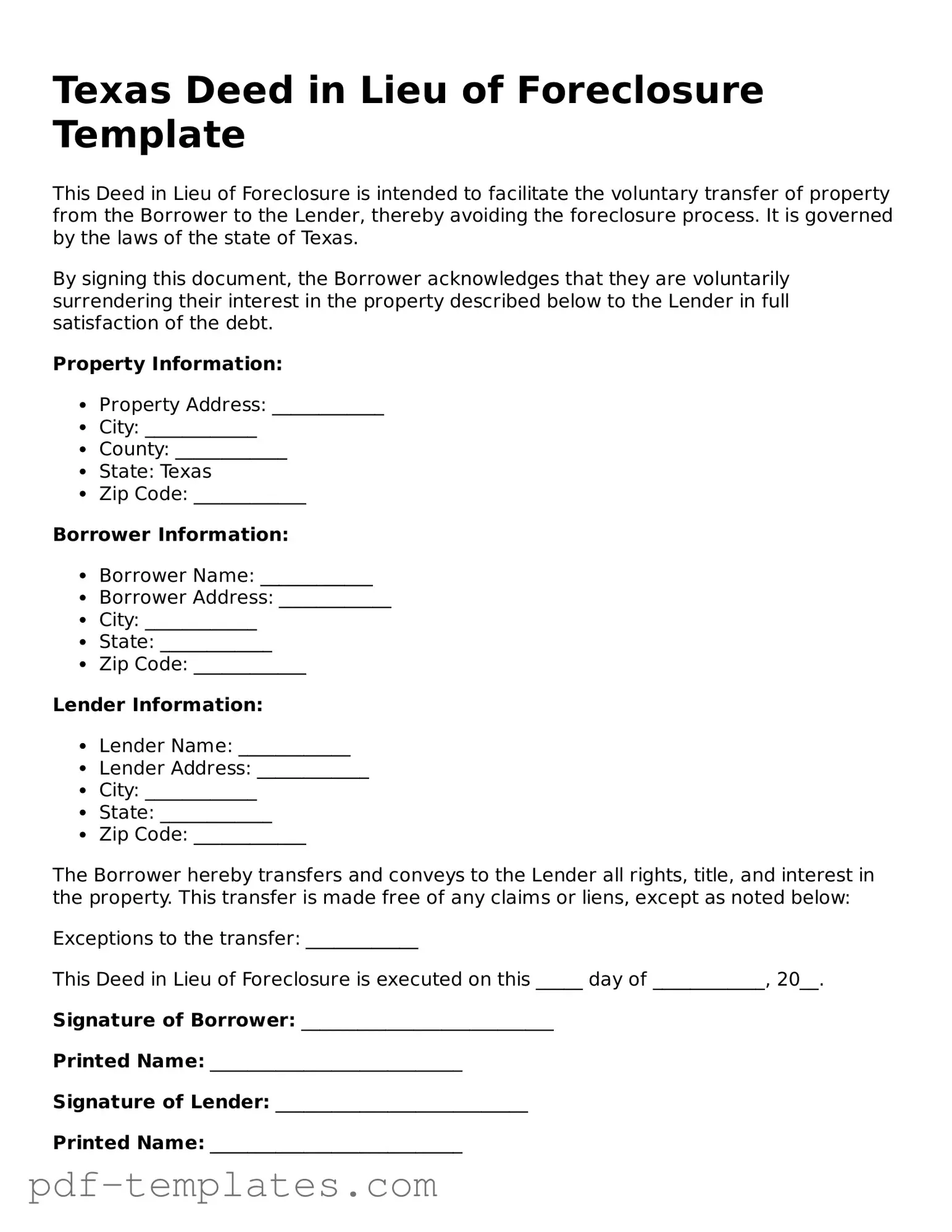A Quitclaim Deed is similar to a Deed in Lieu of Foreclosure in that both documents transfer property ownership. In a Quitclaim Deed, the grantor relinquishes any claim to the property without guaranteeing clear title. This is often used between family members or in situations where the parties trust each other. Like a Deed in Lieu of Foreclosure, it can resolve disputes quickly but does not provide the same level of protection for the grantee regarding the property’s title status.
A Warranty Deed also shares similarities with a Deed in Lieu of Foreclosure, as it transfers ownership of real estate. However, a Warranty Deed comes with guarantees about the title, ensuring that the grantor has the right to sell the property and that it is free from liens or claims. While both documents facilitate property transfer, a Warranty Deed offers more security to the buyer compared to a Deed in Lieu of Foreclosure, which is often used to avoid foreclosure proceedings.
The Trader Joe's application form is a vital document for job seekers wishing to join this beloved grocery chain. It outlines necessary information about potential employees and provides an opportunity to showcase their unique skills and experience. Completing the form accurately can significantly increase the chances of landing a position at one of their stores, and you can find the application at documentonline.org/blank-trader-joe-s-application.
A Foreclosure Notice serves as a formal notification that a lender intends to foreclose on a property due to the owner's default on mortgage payments. While a Deed in Lieu of Foreclosure is a proactive measure taken by the homeowner to avoid the foreclosure process, a Foreclosure Notice indicates that the process is already underway. Both documents are related to the issue of mortgage default but represent different stages in the resolution of that issue.
A Short Sale Agreement is another document that parallels a Deed in Lieu of Foreclosure. In a Short Sale, the homeowner sells the property for less than the amount owed on the mortgage, with lender approval. Like a Deed in Lieu of Foreclosure, a Short Sale allows homeowners to avoid the negative consequences of foreclosure. However, a Short Sale typically involves a sale to a third party, while a Deed in Lieu directly transfers ownership back to the lender.
An Assignment of Mortgage is similar in that it involves the transfer of rights related to a mortgage. In this document, the original lender assigns their rights to another lender or investor. While a Deed in Lieu of Foreclosure involves the transfer of property ownership to the lender to settle a debt, an Assignment of Mortgage is more about transferring the financial interest in the mortgage itself.
A Release of Lien is another document that relates to property ownership and debt resolution. When a homeowner pays off a mortgage or settles a debt, the lender issues a Release of Lien to indicate that the lien on the property is removed. This is similar to a Deed in Lieu of Foreclosure in that both documents signify the end of a financial obligation, but a Release of Lien confirms the debt has been satisfied, while a Deed in Lieu signifies a voluntary transfer to avoid foreclosure.
A Loan Modification Agreement can also be compared to a Deed in Lieu of Foreclosure. This document alters the original terms of a mortgage to make it more manageable for the homeowner. While a Deed in Lieu of Foreclosure is a last resort option to avoid foreclosure, a Loan Modification Agreement aims to keep the homeowner in their home by adjusting payment terms. Both documents are tools for addressing mortgage difficulties but serve different purposes.
An Eviction Notice is related to the foreclosure process but serves a different function. It is issued when a tenant is being removed from a rental property due to non-payment or lease violations. While a Deed in Lieu of Foreclosure deals with property ownership and mortgage defaults, an Eviction Notice focuses on tenant rights and landlord-tenant relationships. Both documents indicate financial distress but apply to different situations.
Finally, a Bankruptcy Filing can be compared to a Deed in Lieu of Foreclosure in terms of debt resolution. When individuals face overwhelming debt, they may file for bankruptcy to seek relief. A Deed in Lieu of Foreclosure is an option for homeowners who want to avoid the foreclosure process without filing for bankruptcy. Both options aim to relieve financial burdens, but they involve different legal processes and implications for the homeowner.
